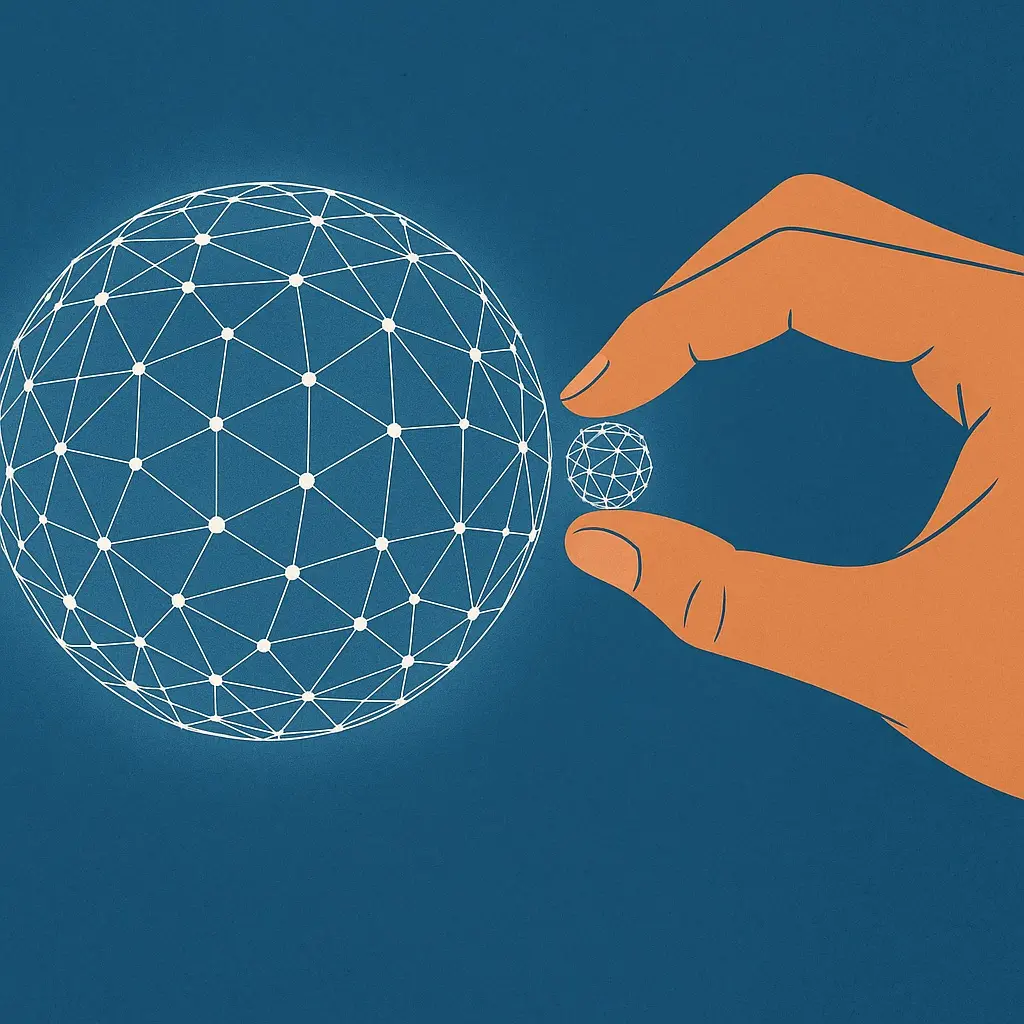We built the web to explore everything, and now we’re letting machines show us only what they think we want to know. We gave it a brain, and now it’s slowly forgetting what made it interesting.
You can almost miss it if you’re not paying attention. A slow drift. A soft narrowing. The kind that doesn’t announce itself with a crash or a headline. It just happens – line by line, answer by answer – until one day you notice that everything you search feels vaguely familiar. Not wrong. Just… expected. Sanitised, flattened out.
This is the world we’re drifting into: one where AI-enhanced search, trained on everything but accountable to no one, has begun to standardise how knowledge appears. Not with malice. Not by force. But by mathematical inertia. And the web, once a chaos engine of opinion, contradiction, obsession, and revelation, is being reshaped into a mirror of consensus.
The Web, as Read by Machines
Large Language Models don’t search. They ingest. They learn not what is true, but what is likely. The internet, to them, isn’t a library. It’s a probability field. What comes next, token after token, is shaped by what came before. This has powerful consequences.
These models don’t reward novelty. They reward patterns. Repetition. Consistency. When you ask a question, the LLM doesn’t dig up the bravest idea. It serves you the most probable one. And probability, by its nature, leans toward the centre. Toward consensus.
This wasn’t how the web was supposed to work. In its unruly adolescence, the internet was plural. You could fall down rabbit holes. You could find niche experts in cluttered forums. You could land on a page that contradicted the one before. The search results didn’t agree with each other, and that was the point.
Now, when an LLM responds to your query, there’s no contradiction. No range. There’s one answer, styled in polite confidence. It is often correct. But it is increasingly familiar.
The Compression of Thought
This is what AI-enhanced search is doing – not intentionally, but consequentially. It compresses the outer edges of the web. It averages out perspectives. It substitutes coverage for curiosity.
It’s already visible in how Google’s AI snapshots behave. In how Bing and Perplexity surface only those sources that align with previous training. In how people use ChatGPT to get the “TL;DR” of everything. We are training our machines to value concision, but not conflict. Synthesis, but not serendipity.
The result? A closed system of consensus. One where the deviant, the exceptional, the unorthodox, gets ironed out. Not because anyone said it was wrong. But because the machine was taught not to notice.
SEO in the Age of Averaging
For SEOs, this is a problem. Because SEO has always lived at the intersection of visibility and difference. You want to be found because you say something specific, not despite it. But in a system that prefers the repeatable to the remarkable, originality becomes a risk.
The flood of AI-generated SEO content only deepens the problem. Thousands of pages, spun up in seconds, all saying roughly the same thing. All “optimised.” All harmlessly digestible and harmfully useless. It’s a glut of the mediocre middle – and it’s clogging the arteries of discovery.
LLMs will cannibalise that content first. They’ll consume it because it’s abundant. But they’ll ignore it because it contributes nothing new. It’s informational filler. Bulk without fibre. The algorithm digests it and moves on.
What remains – what survives – is the rare. The specific. The deeply human.
SEO, in this context, becomes editorial direction. Not content ops. You’re no longer producing assets. You’re shaping arguments. Structuring thought. Making choices. Not just “using a keyword,” but contributing to a conversation that’s now mediated by semi-intelligent intermediaries.
The job isn’t to rank anymore. It’s to be included in the machine’s memory – not quoted, necessarily, but understood as source material. That requires more than optimisation. It requires intent and real knowledge.
The Risk of Being Too Safe
A paradox emerges: to be found, you must be clear. But to be remembered, you must be distinct. And LLMs are currently better at detecting clarity than differences. They’re trained to avoid controversy. To hedge. To blend.
If your content is too aligned, too safe, too similar, too “best practice”, you risk being interpreted as noise. Another redundant voice in the chorus. Another candidate for summary, not citation.
Fringe perspectives are being filtered out not because they’re wrong, but because they’re rare. And rare means risky, when your output is governed by probability.
So the strategic SEO question becomes: How do you create a difference that doesn’t get deleted? How do you say something new in a format that still feels familiar enough to be processed?

The New Craft: Novelty Within Structure
The answer, if there is one, is subtlety. It’s novelty within expected forms. It’s the ancient art of subversion.
You write the how-to article, but you challenge the premise. You structure for the keyword, but you deliver something deeper. You work within the recognisable shell of “SEO content,” but you fill it with rare data, original experience, or sharp synthesis.
Because the machine won’t elevate your voice for being colourful. But it will remember you if you contribute structure to the map. If your content helps clarify a concept, connect two ideas, or reframe an assumption, it sticks. It becomes included.
And inclusion, in this new landscape, is everything. If you are not part of the training data, you are not part of the answer.
From Traffic to Influence
There’s another shift underway. SEO has long been measured by traffic. Rankings. Clicks. But in a world where AI delivers the answer and not the link, those metrics collapse. You might be cited in the AI’s output, but you never visited.
So what replaces traffic? Influence. Are you being paraphrased by the machine? Are your arguments seeding other content? Is your brand shaping the probabilities that determine which answers rise?
These are harder questions to answer. They resist dashboards. But they reflect reality better. Because traffic is no longer the only form of visibility. Presence in the model is. This means investing in depth, not just reach. In ideas, not just format. In positioning your site not as a node in the content supply chain, but as a reference.
The SEO Role Rewritten
So, what does the SEO team look like now?
Less production line. More editorial board. Fewer briefs, more outlines. More research analysts. More strategic curators. Writers who know the topic, not just the tags.
SEO becomes closer to thought leadership. And further from manufacturing. A space where what matters is what you add to the model, not just how you play within it.
It’s slower, yes. But it’s also more defensible. The average content piece will never be read by a human. It’ll be read by a model. And if the model sees nothing new, it will never return.
Let the Edge Back In
In all of this, there’s a risk of loss. The web became what it is because it allowed for edges. For niches and errors and brilliant irrelevance. If we allow our AI to sanitise it – to standardise it – we lose that.
But the alternative is to write with teeth again. To contribute things that do not already exist. To build content that teaches something real, not just something rankable.
That is where SEO goes next. Not towards the middle, but towards the margins. Not to the safest summary, but to the clearest articulation of something different.
The silent shift has already begun. The only way to resist its flattening is to push in the other direction – with structure, intelligence, and an editorial voice that still believes the web can think for itself.
If you want a content strategy agency to future-proof your efforts, get in touch with us today.


